You are using an out of date browser. It may not display this or other websites correctly.
You should upgrade or use an alternative browser.
You should upgrade or use an alternative browser.
Need to build a frame to support a cummins
- Thread starter kiff
- Start date

Help Support Rat Rods Rule:
This site may earn a commission from merchant affiliate
links, including eBay, Amazon, and others.
21willys
Well-known member
- Joined
- Mar 8, 2011
- Messages
- 2,751
The over all design of the frame will make a huge difference. You can do a lot of stuff to make thinner wall rails stronger and keep it clean. With the power of the cummins I wouldn't be worried about the extra weight of heavy frame rails.
XtremeS10
Well-known member
I am also interested in putting a cummins into my ride and I was actually more concerned about what to run for a front axle, I suppose a standard speedway axle couldn't handle the weight...
truck6jason
Active member
- Joined
- Aug 21, 2011
- Messages
- 44
I am building a 31 Ford Four Door with a cummins, made my frame out of 2 x 4 3/16 wall tubing with fish plates and a bunch of cross members. Have started it a few times and haven't seen any flex anywhere. I used a mono leaf with coil overs on the front to make sure it could handle the weight. Rear is triangulated four link with bags and a 2003 chevy 8 lug axle.
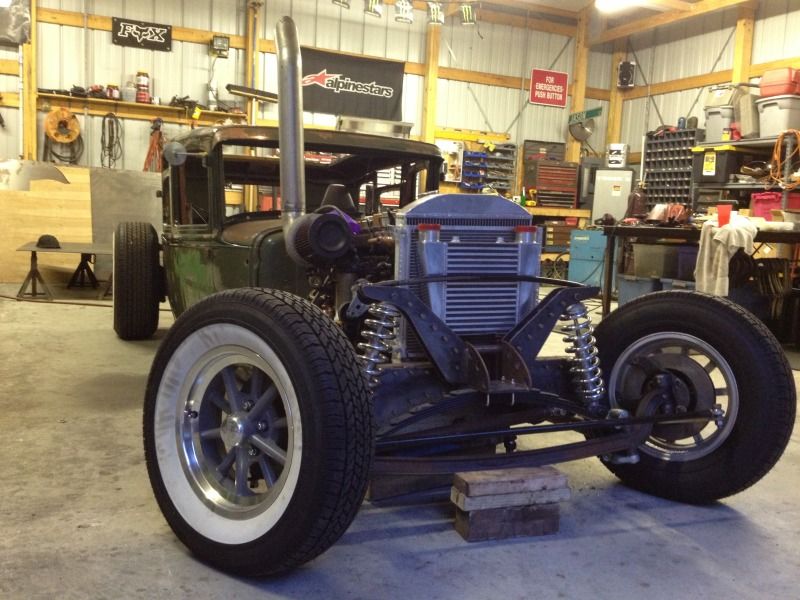
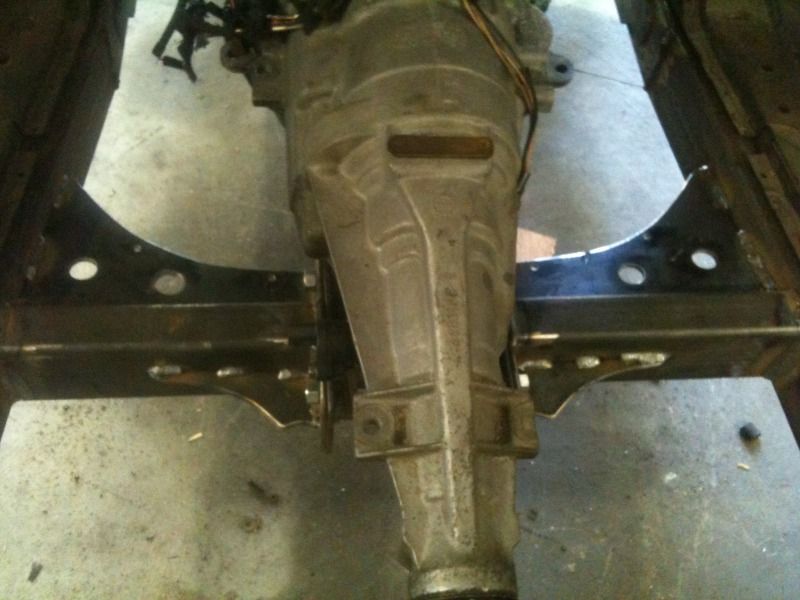
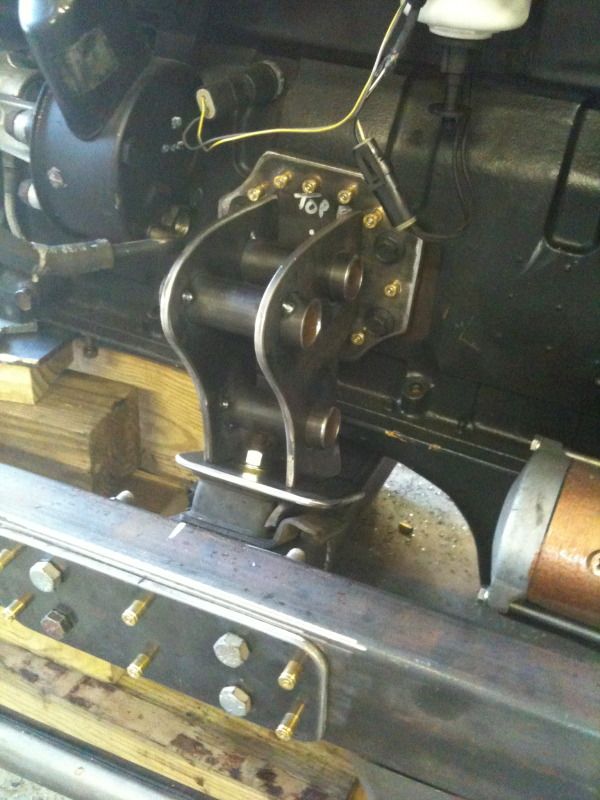
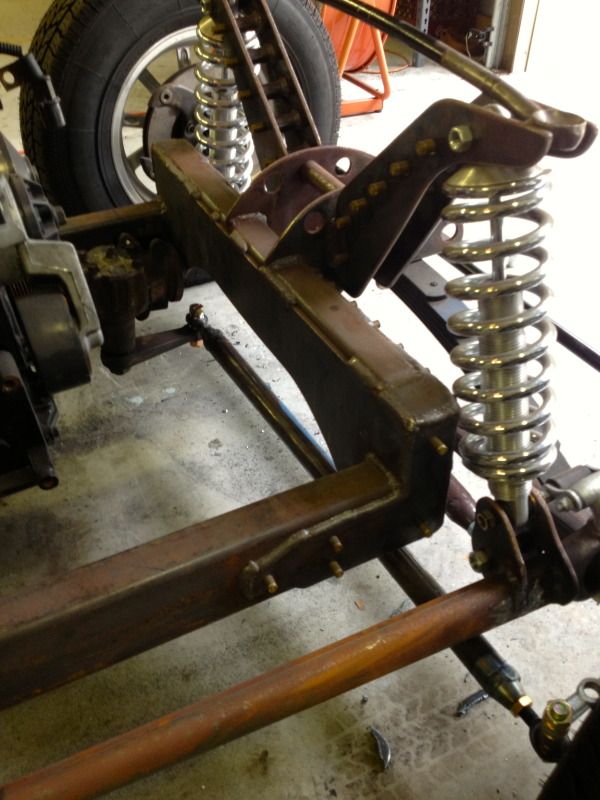
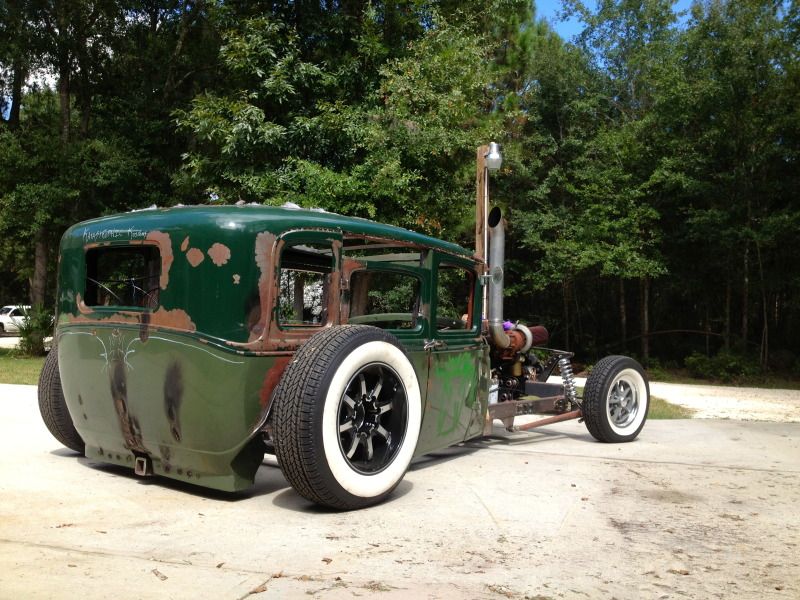
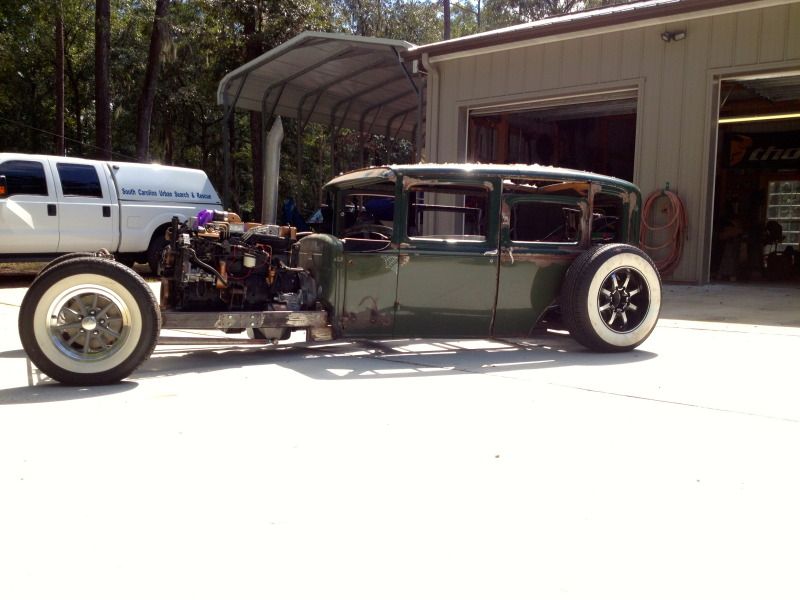






XtremeS10
Well-known member
I am building a 31 Ford Four Door with a cummins, made my frame out of 2 x 4 3/16 wall tubing with fish plates and a bunch of cross members. Have started it a few times and haven't seen any flex anywhere. I used a mono leaf with coil overs on the front to make sure it could handle the weight. Rear is triangulated four link with bags and a 2003 chevy 8 lug axle.






This thing is insanely bad ass!! Did you consider having a spring shop make a leaf so you could get away without the coil overs? Any worries on the axle tube being stressed??
truck6jason
Active member
- Joined
- Aug 21, 2011
- Messages
- 44
This thing is insanely bad ass!! Did you consider having a spring shop make a leaf so you could get away without the coil overs? Any worries on the axle tube being stressed??
Thanks!!
I thought about it but wasn't sure what my final front axle weight was going to be and wanted to have a little different look. the top of the coil over mounts is where the headlights mount. I plan using some portable scales when it's all done and I can change spring rate with different coils if needed. The front axle should be strong enough...I hope..lol
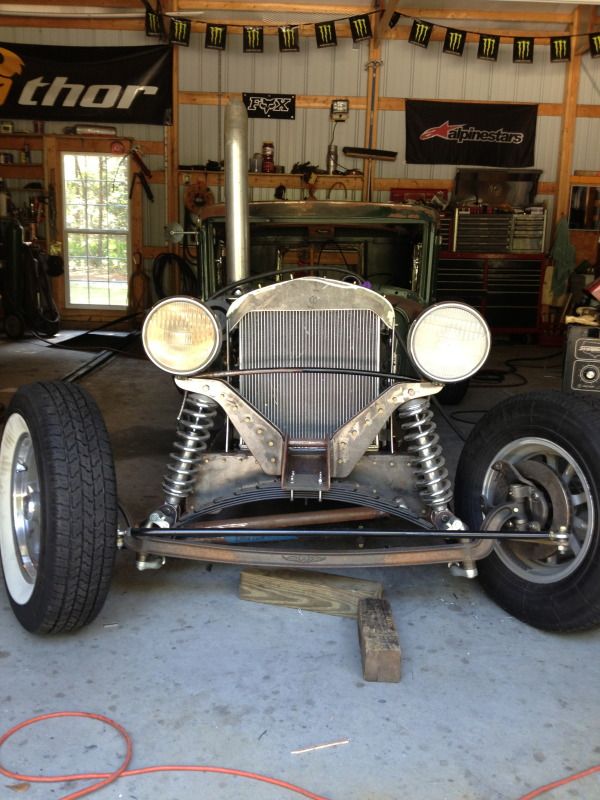
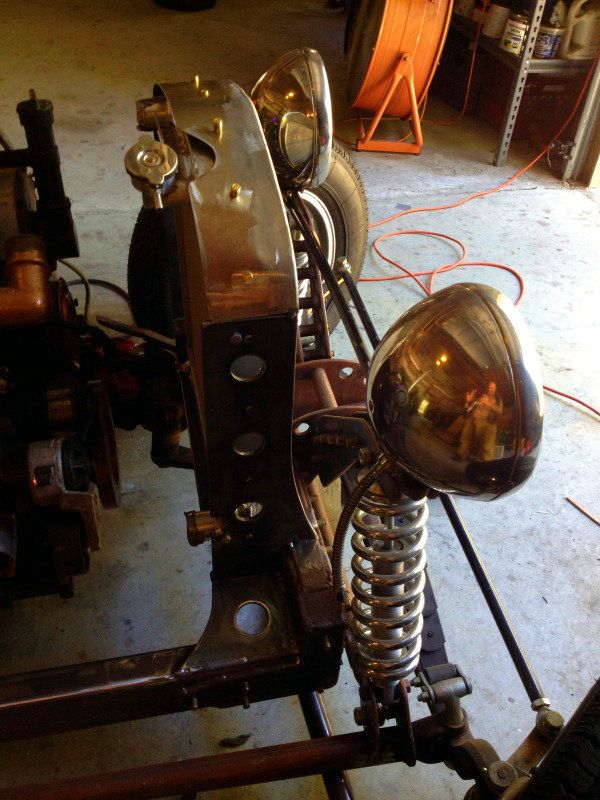
XtremeS10
Well-known member
If you don't mind me asking what exactly is your axle? I am dead set on doing a cummins now and I contacted speedway they told me their axle kits are only good for 2500 pounds total weight but I can't imagine 2500lbs being on the front axle but it does worry me somewhat... its their 2" .25 wall tube axle, which I wanna do a fairly similar setup as you did so that it rides rightThanks!!
I thought about it but wasn't sure what my final front axle weight was going to be and wanted to have a little different look. the top of the coil over mounts is where the headlights mount. I plan using some portable scales when it's all done and I can change spring rate with different coils if needed. The front axle should be strong enough...I hope..lol


Sunnybeach
Well-known member
Zooming way in on one of the earlier photos, the axle looks like a Super Bell:
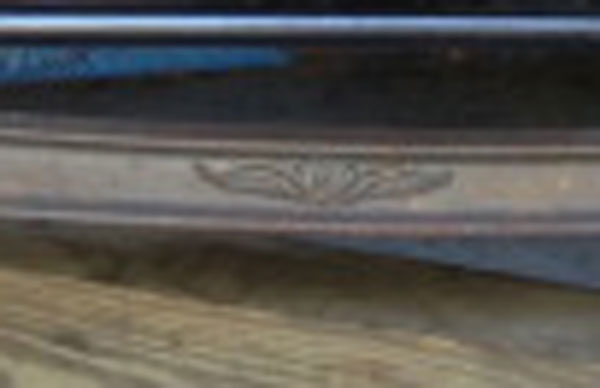
Here is a shot of their logo/axle:
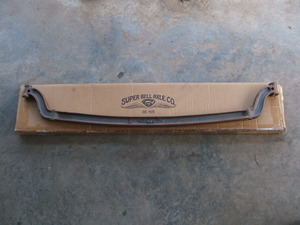
They are available through many places, including Speedway. Here is a link: http://www.speedwaymotors.com/Super-Bell-Axle-Co.html
Here is a shot of their logo/axle:
They are available through many places, including Speedway. Here is a link: http://www.speedwaymotors.com/Super-Bell-Axle-Co.html
Attachments
truck6jason
Active member
- Joined
- Aug 21, 2011
- Messages
- 44
It is a superbell axle and I'm not too worried about it holding up. Superbell did some testing about ten years ago with their steel and aluminum axles. The results are below;
From an article in Feb 2009 Streetrodder
For answers, we went straight to the horse's mouth. As many of you know, Pete & Jake's Hot Rod Parts in Peculiar, Missouri, acquired Super Bell Axle Company in June 1999. They didn't just acquire the product line, either; they acquired the Super Bell name and reputation for strong and true axles. To push the envelope, they first had to establish what traits a sufficiently strong axle maintained.
They started by stress testing both the cast I-beam and tube axles at Arrow Laboratories, an independent laboratory in Wichita, Kansas. What they found was both the tube and cast-iron I-beam axles could sustain up to 12,000 pounds of vertical load with little to no distortion. As a bonus, they found the tube axles they made in Missouri had a slight strength margin over the California-produced axles. With the benchmark established, they started on plans for an aluminum axle.
With CAD (computer-assisted design) plans in hand, Super Bell shopped the market for a proficient forging house. Super Bell said they chose to forge the axles since forging yields a stronger component over casting or machining the pieces form plain billet.
For example, when molten metal cools from casting, it forms a random, non-directional crystal structure similar to the grain pattern of sand. Heating metal to just below its melting point and forcing it into a shape (forging) will align the crystal structure, or grain pattern, making the grain pattern less like random sand and more like the grain in wood. Since the metal isn't allowed to melt and reform its crystal structure, we call this process cold working. Now the part is shaped so the grain flows where the strength is needed the most, much like wood. Forging also makes the metal denser than cast, thereby reducing or eliminating porosity and stress risers. That's why a cast part requires more material and bulk to equal the strength of a forged part.
As for raw billet, since it's cold worked during its manufacturing process, it has a grain structure of its own. However, the cold working is done in one direction and the grain only has one orientation--very similar to a 2x4, if you will. To further follow the wood grain model, cutting either material in any way disrupts this grain structure. Making a part from raw billet is akin to cutting a part from ordinary lumber. Forging a part, however, is like growing a tree exactly to the shape you want.
And this means a lot to us. Under finite element analysis (FEA), a type of CAD stress test used by the aerospace industry, Super Bell found definite advantages in the 7175-T74 aluminum axle. They discovered the aluminum axle has greater tensility (the greatest longitudinal stress a substance can bear without tearing apart) and yield (how much stress a material can tolerate before permanently deforming) properties than 65-45-12 cast ductile iron axles, the staple of the Super Bell lineup.
The FEA testing revealed the aluminum axle holds up to a 62,000-psi load before yielding whereas the cast-iron unit holds 45,000 psi--a 17,000-psi increase in yield strength. The aluminum axle has a tensile strength of 71,000 psi over the cast-iron's 65,000-psi rating. They also found that the aluminum axle would have a fatigue life of 10,000,000 cycles (anything from small bumps to full-blown potholes) before showing any physical property changes under a 1,500-pound frontend.
To back up the theoretical info Super Bell commissioned Arrow Laboratories to test the aluminum axle in the real world. The axle they tested remained solid on one side with 1-inch lightening holes in the other for comparison. The solid side deformed at 10,500 pounds while the lightened side deformed at 10,800 pounds. Not only was the lighter side stronger, it also deformed less, at .18 inch vs. the .24-inch deflection on the solid side. The end result proved the aluminum axle would handle vertical loads up to 20,000 pounds on the frontend--8,000 pounds more than their fabricated iron and steel tube axle or traditional cast-iron beam axle.
That's one strong axle. And considering it's lightweight aluminum, it's big news to us solid-axle drivers. Since this forging is a mysterious and intriguing thing requiring BIG machinery and exacting processes, we persuaded Super Bell to let us tour the facility they commission to forge their parts. When there, we snapped a few photos, some of which should shed some light on the process. It was one heck of a tour, and we consider it a privilege to let you in on it. Enjoy!
From an article in Feb 2009 Streetrodder
For answers, we went straight to the horse's mouth. As many of you know, Pete & Jake's Hot Rod Parts in Peculiar, Missouri, acquired Super Bell Axle Company in June 1999. They didn't just acquire the product line, either; they acquired the Super Bell name and reputation for strong and true axles. To push the envelope, they first had to establish what traits a sufficiently strong axle maintained.
They started by stress testing both the cast I-beam and tube axles at Arrow Laboratories, an independent laboratory in Wichita, Kansas. What they found was both the tube and cast-iron I-beam axles could sustain up to 12,000 pounds of vertical load with little to no distortion. As a bonus, they found the tube axles they made in Missouri had a slight strength margin over the California-produced axles. With the benchmark established, they started on plans for an aluminum axle.
With CAD (computer-assisted design) plans in hand, Super Bell shopped the market for a proficient forging house. Super Bell said they chose to forge the axles since forging yields a stronger component over casting or machining the pieces form plain billet.
For example, when molten metal cools from casting, it forms a random, non-directional crystal structure similar to the grain pattern of sand. Heating metal to just below its melting point and forcing it into a shape (forging) will align the crystal structure, or grain pattern, making the grain pattern less like random sand and more like the grain in wood. Since the metal isn't allowed to melt and reform its crystal structure, we call this process cold working. Now the part is shaped so the grain flows where the strength is needed the most, much like wood. Forging also makes the metal denser than cast, thereby reducing or eliminating porosity and stress risers. That's why a cast part requires more material and bulk to equal the strength of a forged part.
As for raw billet, since it's cold worked during its manufacturing process, it has a grain structure of its own. However, the cold working is done in one direction and the grain only has one orientation--very similar to a 2x4, if you will. To further follow the wood grain model, cutting either material in any way disrupts this grain structure. Making a part from raw billet is akin to cutting a part from ordinary lumber. Forging a part, however, is like growing a tree exactly to the shape you want.
And this means a lot to us. Under finite element analysis (FEA), a type of CAD stress test used by the aerospace industry, Super Bell found definite advantages in the 7175-T74 aluminum axle. They discovered the aluminum axle has greater tensility (the greatest longitudinal stress a substance can bear without tearing apart) and yield (how much stress a material can tolerate before permanently deforming) properties than 65-45-12 cast ductile iron axles, the staple of the Super Bell lineup.
The FEA testing revealed the aluminum axle holds up to a 62,000-psi load before yielding whereas the cast-iron unit holds 45,000 psi--a 17,000-psi increase in yield strength. The aluminum axle has a tensile strength of 71,000 psi over the cast-iron's 65,000-psi rating. They also found that the aluminum axle would have a fatigue life of 10,000,000 cycles (anything from small bumps to full-blown potholes) before showing any physical property changes under a 1,500-pound frontend.
To back up the theoretical info Super Bell commissioned Arrow Laboratories to test the aluminum axle in the real world. The axle they tested remained solid on one side with 1-inch lightening holes in the other for comparison. The solid side deformed at 10,500 pounds while the lightened side deformed at 10,800 pounds. Not only was the lighter side stronger, it also deformed less, at .18 inch vs. the .24-inch deflection on the solid side. The end result proved the aluminum axle would handle vertical loads up to 20,000 pounds on the frontend--8,000 pounds more than their fabricated iron and steel tube axle or traditional cast-iron beam axle.
That's one strong axle. And considering it's lightweight aluminum, it's big news to us solid-axle drivers. Since this forging is a mysterious and intriguing thing requiring BIG machinery and exacting processes, we persuaded Super Bell to let us tour the facility they commission to forge their parts. When there, we snapped a few photos, some of which should shed some light on the process. It was one heck of a tour, and we consider it a privilege to let you in on it. Enjoy!

